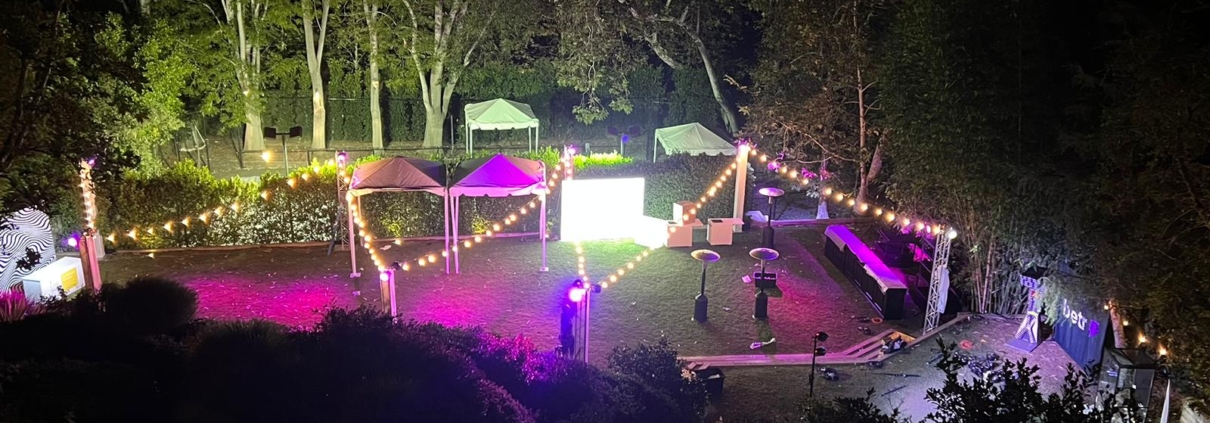Stage lighting is the most crucial aspect of any event because with it, your event is just dim (in the literal sense). It transforms a simple stage into a spellbinding performance space. It sets up the mood, highlighting the moments that make an event what it is, and ensures that the stage is visible to everyone in the audience no matter how far away from the stage they are. Whether you are about to showcase a play, plan a rocking concert, or just getting through an anxiety-driven presentation, understanding what you need to do to set up the stage lights is essential.
While setting up stage lighting can seem difficult at first, with the right planning and some expert tips, you can set up your stage professionally. Here are a few steps you need to keep in mind while setting up stage lights.
1. Figure Out Your Vision
Take some time to figure out your vision behind the event you are organising before you get to the technical requirements needed to set up stage lights. Ask yourself what kind of mood you’re trying to convey. Is it a pulsating high-energy concert that needs moving lights or a more intimate gathering that needs warm tones and subtle lighting. What kind of feeling do you want your audience to experience and are you hosting an elegant and formal gathering or a more energetic one?
Once you figure this out, you can start choosing the right lighting equipment. For instance, for a high-intensity convert, you need a lot of bright lights and spotlights in motion to create an exciting feeling but for a theatrical performance, you need to use softer shades and strategic use of shadows to create a dramatic effect.
2. Consider the Stage Size and Layout
The size of your venue and the stage plays an important role as a larger stage will need more illumination while small stages can function with just a few lights. You can sketch a simple diagram of the stage and position your lighting futures accordingly to visualise the whole scene.
3. Three-Point Lighting
Three-point lighting system is a well-known technique in stage lighting. It uses three lights to create a whole natural-looking stage light setup. Let us understand the functions of each of these lights.
- Key Light: The most important of the lights is positioned at a 45-degree angle from front on one side of the main stage. It illuminates the performance and keeps a check on the overall brightness on stage. It creates a more natural appearance and can guide the overall look and feel of the performance.
- Fill Light: Positioned at the opposite side of the key light, this light helps reduce the shadows created by the main lights. It is placed at a lower angle and the light creates a warm glow and is softer than the key light.
- Backlight: The backlight is used to create depth and is placed behind the performers. It is effective in creating a dramatic highlighting effect in the performer’s costume and a dramatic silhouette.
4. Stage Lighting Equipment Rentals
Rental companies like GeoEvent offer a variety of stage lights, including:
- Par Cans: From providing washes of light to creating great spotlight effects, they provide all sorts of effects. They come in a range of wattages, colour temperatures, and beam angles.
- Fresnels: These are more useful when creating a natural look especially for events that feature speakers. They can be adjusted according to the beam size.
- Moving Lights: As can be figured out from their name, these lights are dynamic in nature and can change colour, creating effects that can be dramatic. They are mostly used for high-intensity performances like concerts and dances.
5. Don’t Forget Color!
While white lights are just used to create spotlights and illumination, coloured gels are used to create moods and add depth to the performance. These transform white lights into the desired colour of light. Reds and yellows are warm tones that help create a welcoming atmosphere and colder tones such as green and blue are used in concerts for a more energetic feel.
6. Test and Refine
Test out the lights once you are done setting up the lighting. Walk around and see how it looks from different angles. Make adjustments wherever needed and eliminate all the unwanted lighting. Having a colleague test out all the stage lightings can also be helpful in case you need advice.
By following these easy tips and practising a little, you can create a stage light setup that enhances all the performances and leaves a lasting impression on your guests. Remember that stage lighting isn’t just about illuminating the stage but also telling a story; it’s an art form that can enhance the overall event experience.



